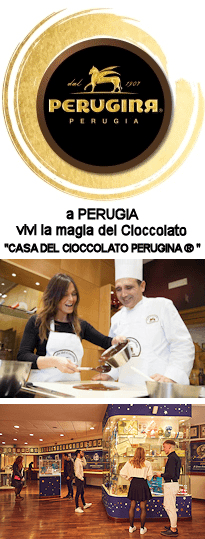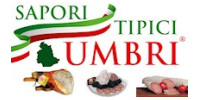At the beginning of the 20th century there were a number of mostly independently-run carpentry workshops in Città di Castello. The town was enjoying a revival in taste for period furniture, helped also by the tradesman and antique dealer Elia Volpi, who in 1912 donated his collection of antique furniture (still visible in the Pinacoteca) to the local administration, thereby inspiring local craftsmen to manufacture imitation period furniture using antique wood. Many craftsmen, both young apprentices and more experienced carpenters learnt this trade at the Scuola Operaia, which was founded in those years.
In the 1930s the craftsman and antique dealer Cesare Sisi once more took up the idea of recycling antique pieces into entirely new creations, although always in the style of original antiques. This marked the beginning of the flourishing local industry in what was termed the mobile in stile – imitation period pieces – that answered to a precise market request for furniture that could be easily inserted within a domestic decorative context alongside other original or restored pieces. Later, when public demand for less expensive pieces increased, the Città di Castello workshops began producing imitation furniture using new or cleverly aged wood.
This particular skill of employing antique wood from dismantled pieces of furniture, old beams or fixtures and adapting it into new creations has survived among many of Città di Castello’s furniture makers, who now come under the recently-instituted "Vero Mobile in Stile Altotiberino" quality denomination label designed to protect the expertise of these exceptional craftsmen.
Besides a tour of the town’s many craftsmen, Città di Castello is well worth a visit also for its magnificent Renaissance palazzi, its Pinacoteca (with works by Raphael, Signorelli, Pomarancio and others) and for the Burri collection housed in Palazzo Albizzini for the smaller scale works and at the former tobacco leaf drying plant for the master’s large format pieces. The surrounding area also has a wealth of small industries and workshops all specialising in period furniture reproductions.
Towards the end of September the town hosts its annual show of period furniture and crafts, with pieces from both local manufacturers and other craftsmen from Central Italy.
------------------
"Umbria...Cuore verde d’Italia. Percorsi di qualità", Agenzia di Promozione turistica dell'Umbria, Perugia, pg.36, by kind permission.
Our network:
Wednesday 20 November 2024
Cabinetmaking in Città di CastelloAll'inizio |

| THEMATIC HOLIDAYS | go |
• Ancient documents and illuminated manuscripts
• Renaissance Umbria
• Umbria the Poet’s Muse
• Umbria With the Kids: Perugia’s Città della Domenica
• Golf & Art in Umbria
| WINE AND FOOD | go |
• Typical Umbrian dishes
• Umbrian cuisine
• Typical Umbrian produce, where to buy and where to taste
• Typical Umbrian food
• Wine Tours in Umbria
• Umbrian Wines and Regional Wine Trails
• Enoteche, vinerie and wine bars in Umbria
• Umbrian Wines
• Wineries and wine tasting in Umbria
| ITINERARIES | go |
• Contemporary art in Umbria
• The female saints of Umbria
• Benedictine monasteries
• Ancient castles and fortresses
• Guided tours and itineraries in Umbria

| PARKS AND NATURE RESERVES | go |
• Lake Trasimene
• Parco Fluviale del Tevere
• Parco Regionale del Lago Trasimeno
• Parco Regionale del Monte Subasio
| WHAT TO SEE & DO | go |
• Cooking courses in Umbria
• The Nahar adventure park, enclosed within one of Italy 's largest alpaca farming areas, offers tourists the chance to spend a day experimenting new sports and generally having a good deal of fun in an unparalleled natural setting!
• PIERMATTEO D’AMELIA and the Renaissance in Southern Umbria
• FRANTOI APERTI Following the DOP Umbria quality olive oil trail
• Wedding in Umbria
• MAP of UMBRIA to travel in Umbria
• Tourist guides of Umbria
• Quality produce - sustainable success stories
• Oil mills and producers across the region Umbria
• Academies, Schools in Umbria and Italy
• Exhibition Perugino, divine painter
• Itineraries & Packages
Booking.com
• Beauty Farms in Umbria
• Wellness in Umbria: opportunities for tourists
• Spiritual Retreats in Umbria
• Dermocosmetici Oro of Spello for protecting your skin
• Wellness in Umbria
• Rafting
• Paragliding and Hang-Gliding
• Horse Riding in Umbria
• Golf in Umbria
• Umbria by Bike
• Getting married in Umbria
• SM.MA. rental of equipment, marquees and gazebos for catering and banqueting
• Company meetings in Umbria
• Venues and Entertainers for Events in Umbria
• San Gemini - Centro Congressi
• Park Hotel ai Cappuccini in Gubbio
• Events and Cerimonies in Umbria – Deals and Offers
• Conferences and Conventions – the Advantages of Choosing Umbria

• Textiles and Lace-Making in Umbria
• Deruta Ceramics
• Cabinetmaking in Città di Castello
• Woodcarving in Umbria
• Ceramics in Umbria Art and Tradition
• The Ceramics of Deruta

| BEAUTY & WELLNESS | go |
• Wellness in Umbria: opportunities for tourists
• Spiritual Retreats in Umbria
• Dermocosmetici Oro of Spello for protecting your skin
• Wellness in Umbria
| SPORT | go |
• Paragliding and Hang-Gliding
• Horse Riding in Umbria
• Golf in Umbria
• Umbria by Bike
| WEDDING | go |
| MICE (MEETING INCENTIVES CONFERENCES EVENTS) | go |
• Company meetings in Umbria
• Venues and Entertainers for Events in Umbria
• San Gemini - Centro Congressi
• Park Hotel ai Cappuccini in Gubbio
• Events and Cerimonies in Umbria – Deals and Offers
• Conferences and Conventions – the Advantages of Choosing Umbria

| HANDICRAFT | go |
• Deruta Ceramics
• Cabinetmaking in Città di Castello
• Woodcarving in Umbria
• Ceramics in Umbria Art and Tradition
• The Ceramics of Deruta









